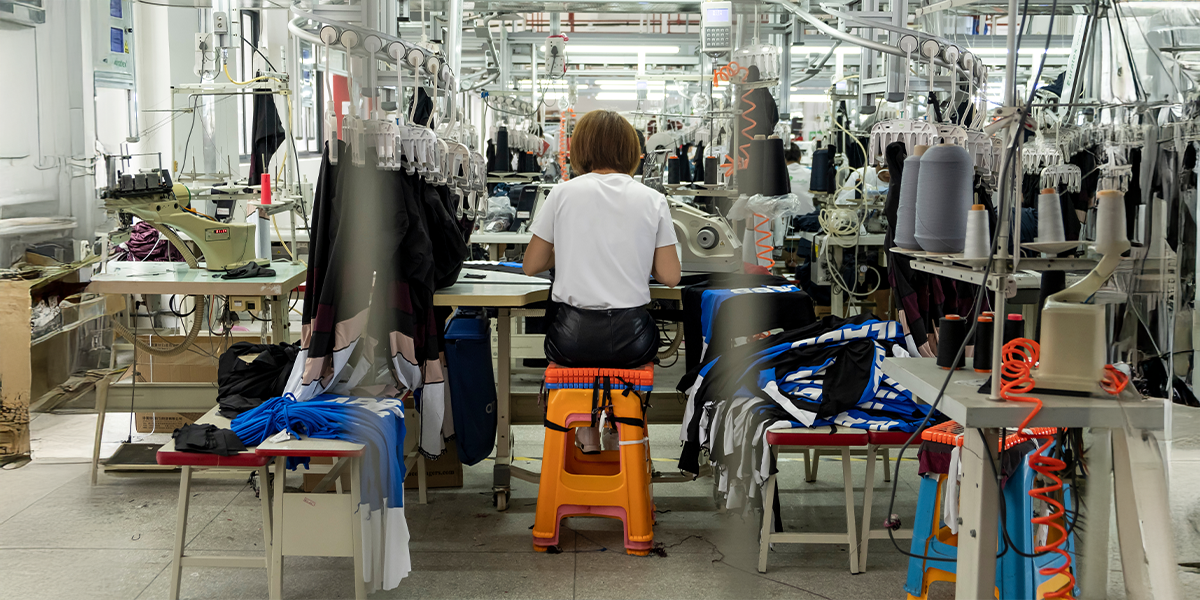Summary:
A global apparel manufacturer eliminated $40,000 USD in penalty claims from brand clients by implementing SATO’s RFID shipping verification system. The solution enabled accurate item-level packing and reduced shipping times by 90%. ANZ fashion brands can gain greater control by requiring RFID source tagging at their partner factories.
Background
When your products are made overseas, how can you ensure every box is packed accurately and prevent downstream chaos?
For Australian and New Zealand fashion retailers and brand owners, most apparel is produced offshore — but quality issues like mispackaging still land at your feet.
-
Incorrect counts and wrong SKUs delay order fulfilment.
-
Customer complaints erode brand trust.
-
International retailers may even fine suppliers for repeat errors.
Yet the real issue often lies upstream: manual packing methods, human error, and zero verification before goods are dispatched from the factory.
According to the Australian Fashion Council, over 90% of fashion businesses in Australia manufacture offshore, and most lack visibility into factory-level packaging processes.
Business Challenge
One high-volume apparel manufacturer producing good for global fashion brands faced mounting mispackaging problems:
-
Despite retraining and updated SOPs, incorrect item counts were slipping through.
-
Brand clients issued $40,000 USD in annual fines due to order fulfilment failures.
-
Factory teams relied on manual counting and checklist-based verification, which were prone to human error.
This inefficiency didn’t just damage the manufacturer's bottom line — it exposed their clients (the brands) to reputational risk and costly order delays.
SATO’s RFID Solution

To address the root cause, SATO delivered an RFID shipping verification system, enabling automated, source-level accuracy at the point of packing.
Solution Components:
-
RFID tags are applied to each garment at the factory.
-
A custom software system integrated with the factory’s IT to manage shipment validation.
-
An RFID tunnel scanner is installed on the production floor to automatically verify box contents before dispatch
How it works:
-
RFID tags are encoded and applied at the source, and every item gets a unique digital ID.
-
When boxes are packed, they’re passed through the RFID tunnel.
-
The system instantly checks contents against the shipping manifest.
-
Mismatches are flagged in real time, preventing mislabelled or incomplete shipments from leaving the factory.
This solution replaced manual item counting with automated, real-time verification, dramatically improving speed and accuracy.
Results & Impact
| Benefit | Outcome |
| Penalty Claims Eliminated | ✔️$40,000 USD in annual mispackaging penalties reduced to zero |
| Time Saved in Shipping | ✔️90% faster verification and box preparation |
| Operational Accuracy | ✔️Automated, item-level accuracy across shipments |
| Brand Confidence Improved | ✔️Reliable shipment quality for global brand clients |
| Scalable Across Factory Network | ✔️Works across multiple production sites overseas |
Why It Matters in Australia & New Zealand
For ANZ fashion brands outsourcing to overseas factories, the cost of getting it wrong is high:
-
Lost time resolving incorrect shipments
-
Brand damage from failed launches or retail fines
-
Rework and returns eating into profit margins
And in fast-moving markets like fashion, slower fulfilment = lost sales.
By requiring RFID source tagging, brand owners and retailers in Australia and New Zealand can:
-
Build accuracy into factory processes
-
Reduce returns and fulfilment delays
-
Strengthen relationships with retail partners
SATO’s solution proves that digitising at source pays off for both brands and manufacturers.
Useful Links & ANZ Insights
-
Australian Fashion Council – National Clothing Product Stewardship Scheme: Clothing Data Report 2022 - 92% of fashion businesses manufacture offshore, often without packing traceability.
-
GS1 Australia – RFID in Retail - Explores the benefits of RFID technology in the retail sector, including improved inventory accuracy and supply chain efficiency.
-
McKinsey & Company – The State of Fashion 2024 - Analyses global fashion industry trends, emphasising the need for digital transformation and supply chain resilience.
-
Accenture – Reinventing the Future of Retail - Discusses strategies for building agile and transparent supply chains to mitigate disruptions and enhance profitability.
Final Takeaway
If you're an apparel brand owner or retailer in Australia or New Zealand, accuracy at source is essential — not just for preventing costly mistakes, but for protecting your brand reputation in a fast-moving, compliance-driven market.
By enabling or mandating RFID tagging at your manufacturing partners, you can:
-
Eliminate mispackaging and chargebacks
-
Increase order accuracy and customer satisfaction
-
Create a more agile, scalable, and sustainable supply chain
SATO’s RFID shipping verification system is trusted by apparel manufacturers worldwide.
With a global presence spanning all major apparel production hubs — including China, Vietnam, Bangladesh, India, and Southeast Asia — as well as across Oceania, SATO can support your factory partners with:
-
Local technical support
-
RFID hardware and tagging systems
-
Custom software integration
-
Full end-to-end implementation and training
Build accuracy, visibility, and trust — from factory floor to final delivery — with SATO as your global RFID partner.





Comments